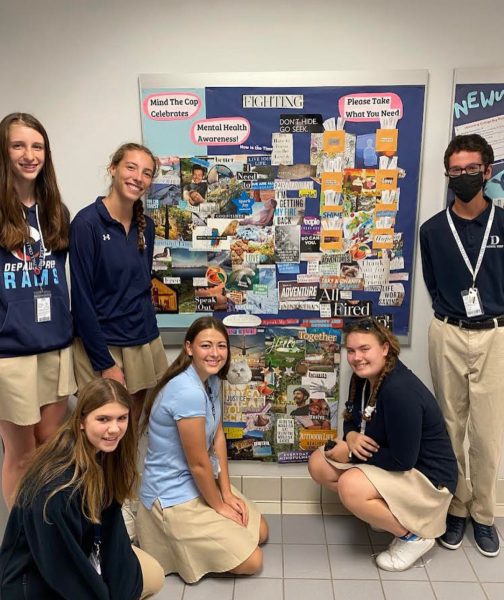Hispanic Heritage Month and being Latina in America: An interview with Ms. Okulinski-Reyes
DePaul Prep recently completed its whole school celebrations of Hispanic Heritage Month, which runs from September 15 to October 15. Staff Writer Amanda Dillon sat down with Ms. Patty Okulinski-Reyes, one of DePaul Prep’s art teachers, to hear about her Hispanic background and her experiences being a Latina in America.
Dillon: What makes Hispanic Heritage Month important to you?
Ms. Okulinski-Reyes: Hispanic Heritage Month is important to me because it is an opportunity to celebrate the lives, culture and contributions of the 62.1 million Hispanics in the U.S.
Dillon: What is your favorite tradition from your culture?
Ms. Okulinski-Reyes: My favorite cultural tradition is cooking the endless traditional dishes from each of the states in Mexico; our culinary capital is one of the most complex and diverse in the planet!
Dillon: What do you think the most difficult thing is about being Hispanic in America?
Ms. Okulinski-Reyes: The most difficult thing about being Hispanic in America is the Love and Hate relationship others have with us; they love our food, our service, and our music, but we still suffer from racism from the same people.
Dillon: How do you incorporate your heritage in your everyday life?
Ms. Okulinski-Reyes: I incorporate my heritage everyday by talking in Spanish to other Spanish speaking people, and by sharing my cultural capital with my students.
Dillon: What was your favorite thing about growing up Hispanic?
Ms. Okulinski-Reyes: My favorite thing about growing up Hispanic is the love and respect for the familia.
Dillon: What do you want people to know about your culture that many people don’t know about?
Ms. Okulinski-Reyes: One thing I want people to know about my culture is that we don’t have “one look” and that Mexicans come in many colors and sizes.
Dillon: What don’t you like about the way some people perceive your heritage?
Ms. Okulinski-Reyes: I don’t like the way people generalize all Hispanic immigrants as Mexicans, when the immigrants are from different countries in Central and South America.
Dillon: How have you been treated and felt like you were treated differently as a Hispanic woman?
Ms. Okulinski-Reyes: I’ve been discriminated against for being a Hispanic woman before but I politely defended myself.
Dillon: How do you incorporate your culture into your art?
Ms. Okulinski-Reyes: I incorporate my culture into art by playing [DJing] at Latinx events and collaborating with other Latinx.






